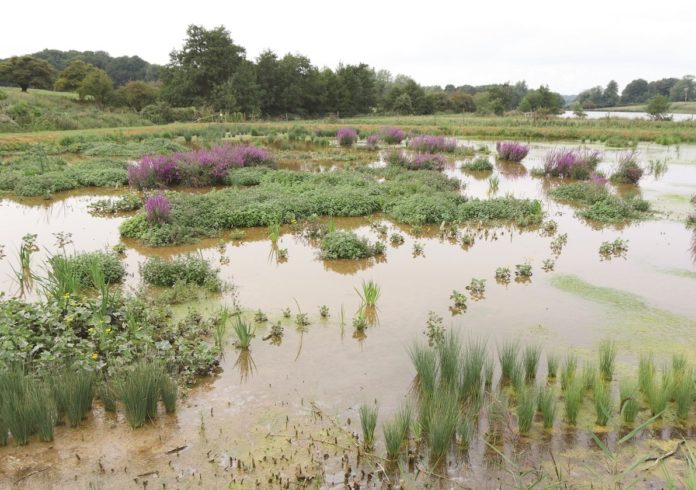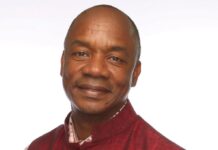Water utilities contribute to the UN Sustainable Development Goals beyond the core water goal. Keith Hayward gathers some UK-based perspectives on the value and challenges of viewing utility activity through the SDGs.
For the UK’s Anglian Water, the UN Sustainable Development Goals (SDGs) offer a useful way of framing its activity in a broader context.
“There is an element of credibility to the SDGs, so it helps people to understand that what we’re doing at a local level is contributing to a wider, greater good,” explains Andy Brown, head of sustainability at Anglian Water Services. This is particularly true when interacting with customers and other stakeholders in the region, he says. “It helps to create a common language and narrative.”
Beyond the water-focused SDG goal 6, an SDG lens highlights, for example, how Anglian, along with other water utilities, contributes to quality education, covered by goal 4 and, more specifically, target 4.4, which covers skills for employment.
This contribution includes delivering programmes in schools, and promoting STEM (science, technology, engineering and mathematics) subjects, says Brown. He adds that, in April, UK water companies signed up to The Social Mobility Pledge. “That is about targeting areas where there is the least social mobility with our education and recruitment programmes,” he says.
Another example is the contribution around goal 12, on sustainable consumption and production, specifically target 12.8, on ensuring that people have information and awareness for sustainable development and lifestyles in harmony with nature.
“There is a huge amount of work that we do as a company, but also as a sector, in helping people to understand that,” he says. “There will be much more that we can do once we have smart meters in place – we can really help people understand the connection with what they are actually using and how that impacts on the outside world.”
Working with the SDGs
The SDGs are 17 linked goals, with sub-goals and numerous targets and indicators. They aim to secure action by national governments, so are not a fixed framework for action at the utility level.
“There is a big debate about whether you should look at all 17 goals or focus on the ones most material to you,” says Brown. “You can work in the spirit of all 17, but I think you have to focus on those where you are either having the greatest impact or you have got the greatest ability to make some positive change.”
Then there is the question of whether to express that impact in relation to a goal as a whole, or an aspect of it. “We think focusing at the target level is the right level for us as a business,” says Brown. Referring to the goal level perhaps brings a risk of overstating the contribution made. On the other hand, the specific SDG indicators are more relevant for judging national progress. “The target level helps you to really understand whether we are actually contributing,” he says.
Brown notes that he has shared experiences with his UK peers. “We are all doing things slightly differently,” he says. “It is different for every business, and you have got to do what is right for your business.”
Widening the focus
Consulting company Arup also maps its activities against the SDGs. Dr Mark Fletcher, Arup’s global water leader, explains that the company started capturing the social benefit of its work while the SDGs were still being formulated. “We look at the benefit per project against things such as drought, flooding, wastewater, water supply, and water treatment, and assign the social benefit of a project,” he says.
“What we have done, therefore, is looked at all of those projects through the lens of the SDGs, recognising that SDGs are national targets, not targets for Arup. We can then reflect back to our staff the fact that we are working across the SDGs – for some of them that is very significant.”
Fletcher explains that Arup has developed its approach beyond this, breaking down its contribution from a local, city, regional, national and global perspective, and whether the work is through influence, advice, or design. The company is looking to take this further, identifying whether work is for the public sector, private sector or third sector, and there is a further opportunity to capture the income level of those who benefit from projects. “That is the direction we are going to try to go,” he adds.
This all supports the view that there is value for water utilities in projecting their activities through an SDG lens. Indeed, “SDG 6 underpins all of the other goals – water sits at the centre,” notes Fletcher.
At the same time, this is just one aspect of a broader field of how to view and assess the work and contribution of the sector. “For us, it is about sustainable development,” says Fletcher. “The SDGs are a set of national targets. The six principles that we follow in terms of sustainable development would very clearly map onto what all the water companies are doing.” He lists these as improving health and wellbeing, transitioning to a zero-carbon economy, adopting circular economy principles, enhancing community resilience, creating social value, and respecting planetary boundaries. “All of these are consistent with what water companies do,” he adds.
Sustainability strategy
The way Anglian Water works with the SDGs is, indeed, part of its broader approach to sustainability. In that context, the links to the SDGs described above are about mapping positive and negative impacts across from its business plan. “I am quite happy and confident with the way we do that,” says Brown.
“The next level is then how you try to incorporate that mapping into your thinking and decision-making, both at a project level and a strategic level,” he continues. “I think every company is not as mature in thinking about how they do that.”
“We are looking at embedding six capitals metrics at the core of our decision-making process,” says Brown. This looks at natural, human, social, intellectual, financial and manufactured capitals, and how a business transforms these inputs into outputs. “Those are the key things we will track through investment decisions,” adds Brown.
“What we try not to do within Anglian is create lots of different systems that we are tracking at the same time. We want to track one set of metrics and be able to dial in or out interpretations of those metrics onto systems.”
Use of the SDGs will, therefore, work around that. “You can use those metrics to act as proxies towards the targets within the SDGs as well,” says Brown. “You can map those against the SDG targets and then be able to relate those to an audience who are interested in and understand the SDGs.
“We are working on those metrics at the moment. We’re looking at testing them over the next six months, and hope to be implementing them in April next year.”
SDG strengths
The SDGs clearly have a role in helping drive national action, as the latest phase in the global sustainability and development agenda.
“To me, they have galvanised the focus on some really important issues for the future of humanity,” says Arup’s Fletcher.
They have also brought a different perspective to this agenda, connecting issues and the progress of developing and developed countries.
“I think what is powerful is the underpinning of water underneath virtually all of the other SDGs,” adds Fletcher. “It is very powerful to acknowledge that in discussions; the SDGs are becoming a way of joining up what were previously siloed initiatives and endeavours.”
This does not mean they always provide a good fit as the main focus at, for example, a utility level, especially given that the SDGs are framed around a 2030 horizon.
Anglian Water’s Brown adds: “That is another reason why we are trying to overlay the SDGs on our normal embedded sustainability framework, so that it complements and supplements what we are doing, and it enables us to talk about our contribution to the SDGs without completely changing or adding another whole separate stream of work.
“However, the water industry has got sustainability pretty much at the heart of what we do.
“If you are in a company that doesn’t have that and doesn’t have all the regulatory framework and history that we have, using the SDGs as a framework to create your sustainability strategy is a really good starting point.”
Support for project SDG success
In a survey carried out last year, around 90% of engineers, academics and policy-makers felt it was very important to be able to make SDG connections in projects, but only 30% felt they had the appropriate tools and approaches.
This is according to Paul Mansell, who carried out the survey. He has been developing a tool to help incorporate SDGs in water projects, as a doctoral researcher under Professor Simon Philbin at London South Bank University. Development has included applying the model to an Anglian Water case study.
“The sense of the importance of this subject is very high, but there is frustration over a lack of tools available,” says Mansell.
“Getting alignment with stakeholders as to what defines success for individual projects is a critical part of starting successfully. If you add SDGs on top of that, it is both a real opportunity and a challenge.”
Achieving this alignment is difficult enough. It needs, for example, stakeholders to understand the differences between project outputs, outcomes and impacts, explains Mansell. “That is crucial for water project teams,” he says. Adding in the SDGs makes this more complex, not least because of their country-level focus. ìIf you [want to] align the ambitions of your water projects to SDGs at a goal level and a target level, you probably can’t do it by the official UN indicators,” he adds.
“If you can [align] at the goal and target level, it adds coherence to what you are trying to achieve at a more strategic level – that is the opportunity.”
The tool is based on a model called the Infrastructure SDG Impact-Value Chain. It would be used in conjunction with workshops. “These are needed to be able to align it with the specifics of an individual project,” says Mansell.
Having developed the theoretical basis, Mansell is looking for live project trials. “I have run a number of workshops and the feedback has been very strong, both in the UK and abroad,” he says. “For the next step, it needs to be trialled in projects that are operational, whether at the start of the project life-cycle or midway through.”








